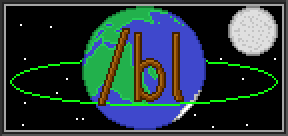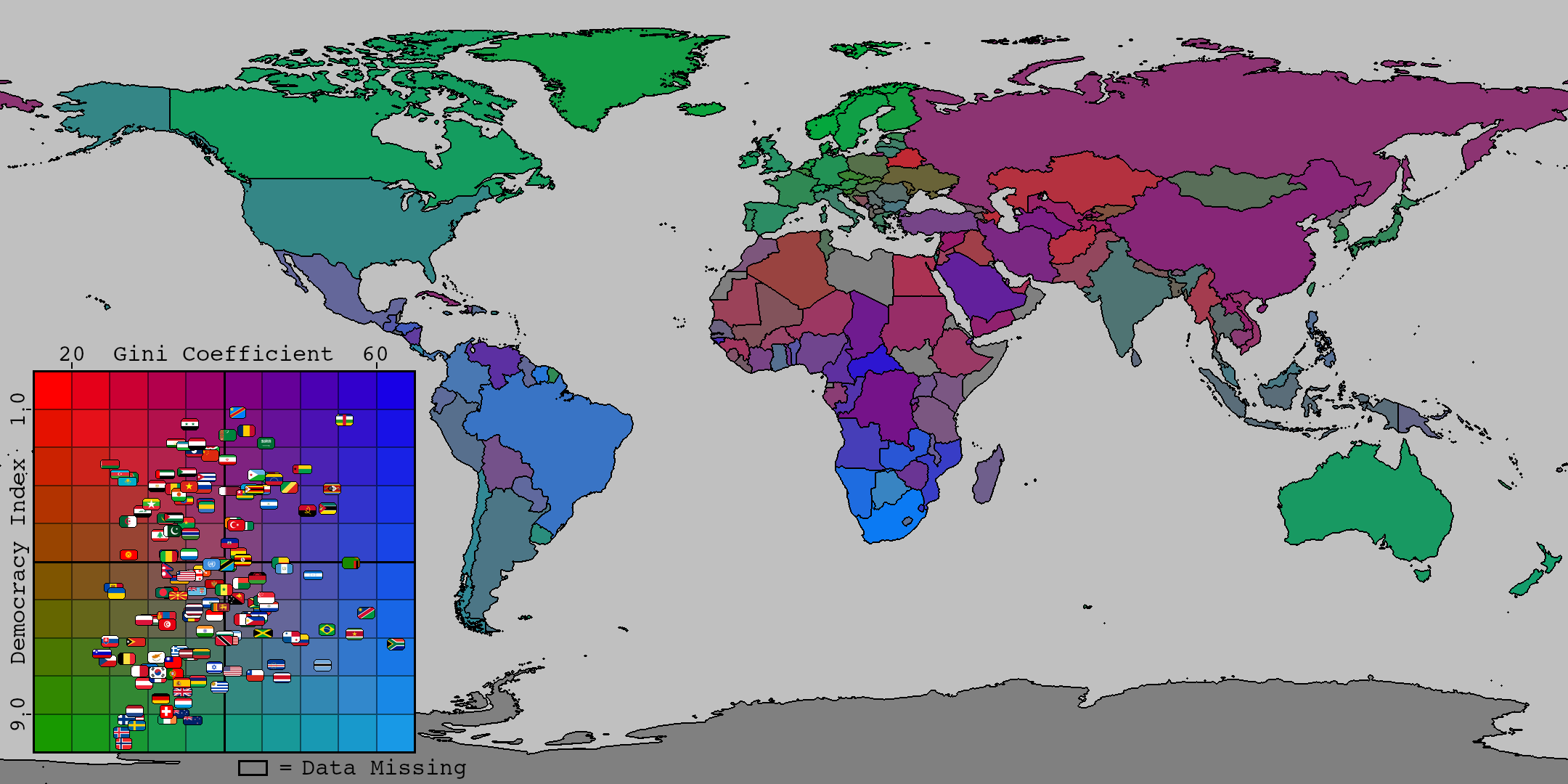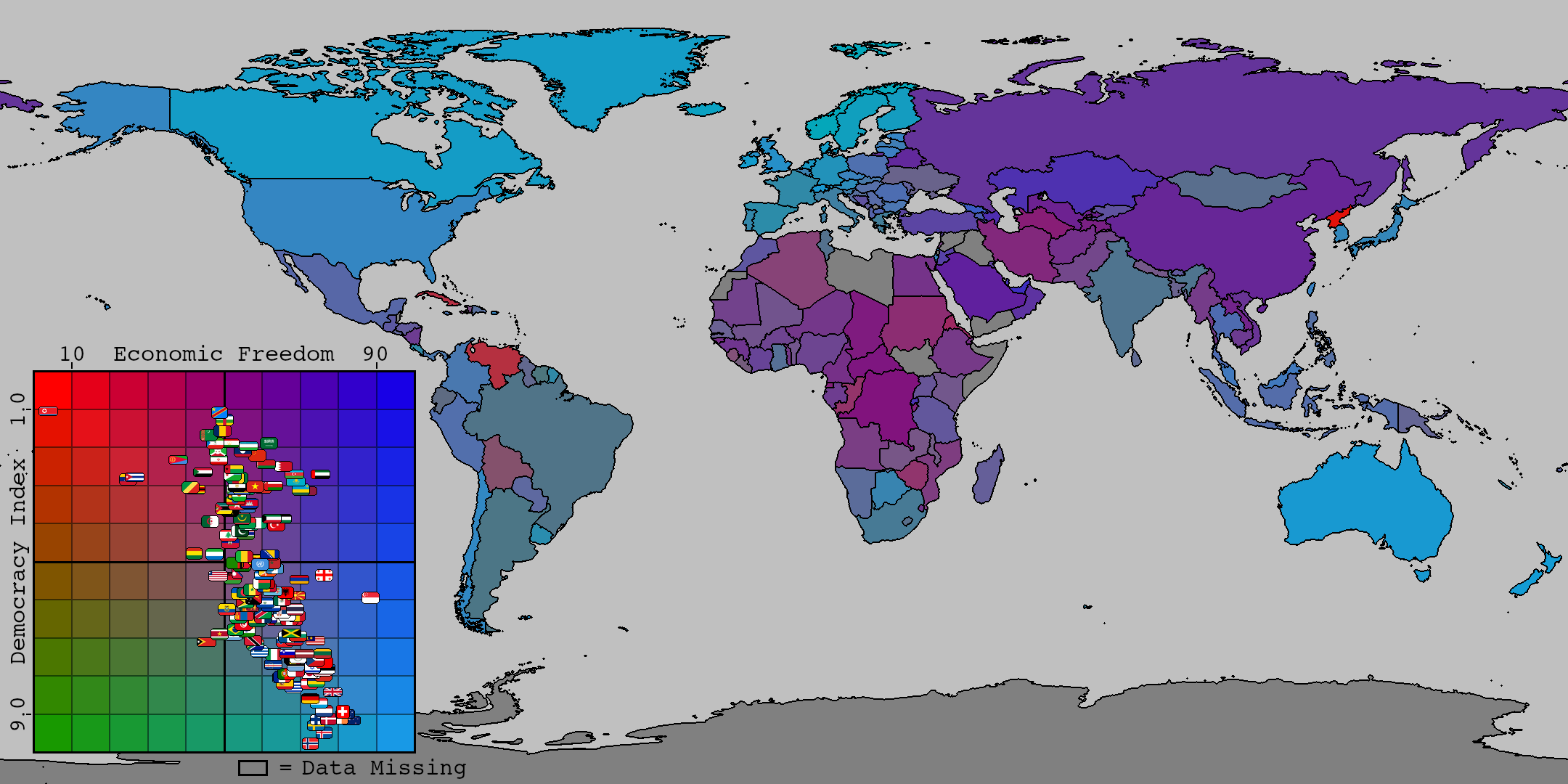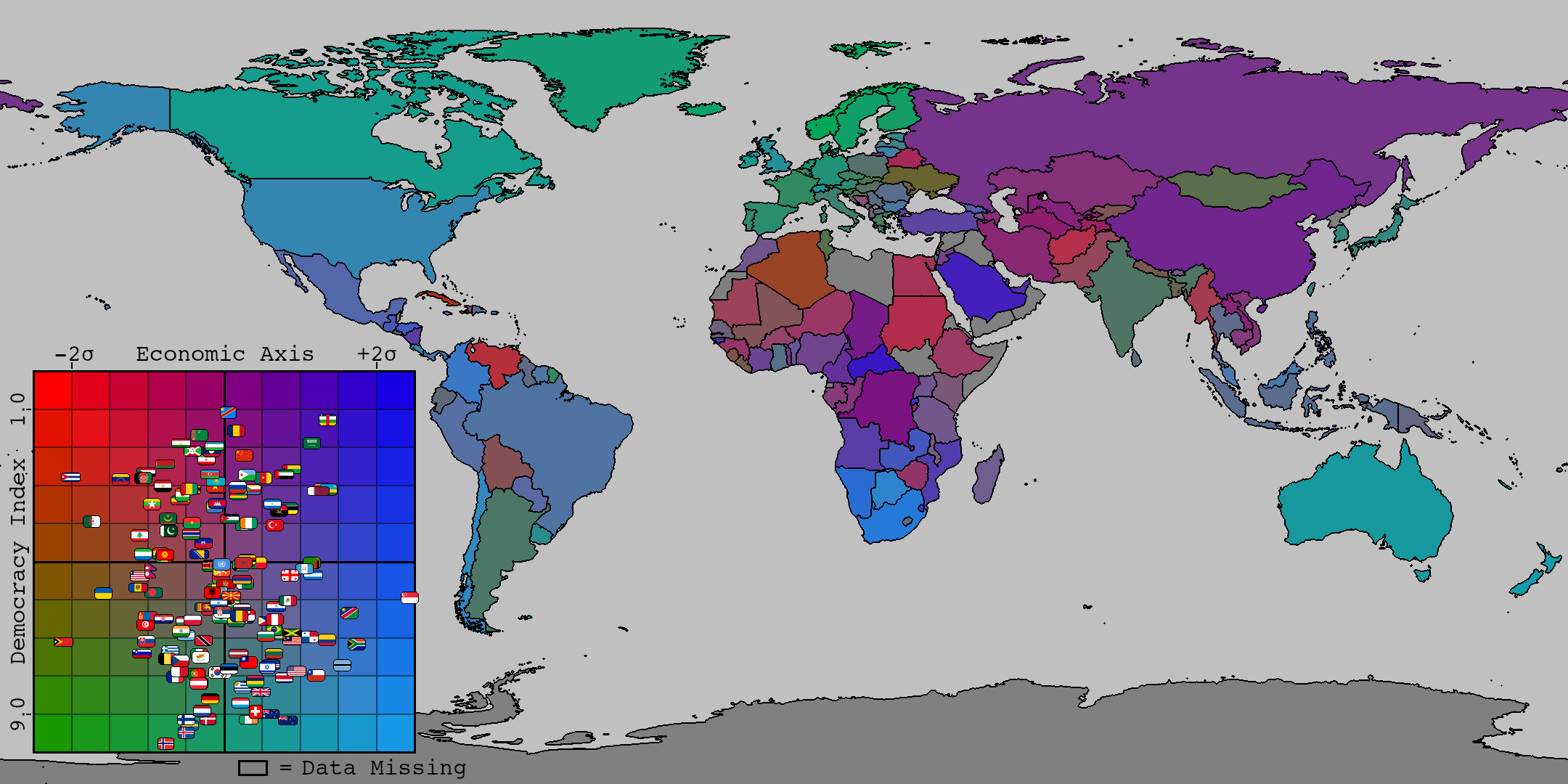I've seen many diagrams and, more frequently, memes, that place the dominant political ideologies of various countries or political parties onto a political compass. These are usually based on the ideologies of particular leaders, as the political compass is a model of individual ideology, but I wanted to try to find an at least somewhat objective metric to place the world's countries on the compass based on how those counties' economies and political structures reflect the ideologies on the compass.
Interpretations of what exactly defines the axes of the political compass vary, but overall the general idea is as follows:
The vertical axis is the social axis, measuring civil liberties and personal freedom, ranging from authoritarian ideologies on top to libertarian ideologies on the bottom of the compass. The horizontal axis is the economic axis, with the left valuing equality and collectivism, while the right values laissez-faire capitalism and social hierarchy.
For the Authoritarian-Libertarian axis, the most fitting metric seems to be the Democracy Index,
[1]Data retrieved from the Economist Intelligence Unit. which takes into account both civil liberties and the amount of influence people have in the government through democratic means. Other indices that measure freedom tend to either simply group countries into discrete bins that don't have enough specificity, or incorporate economic freedom, which would be better represented as part of the Left-Right economic axis.
For said Left-Right economic axis, I've decided on two potential approaches to what the axis means. One is to use an economic freedom index as a measure of how far to the right a nation is economically. The right tends to represent free market ideologies, while the left prioritizes economic equality over economic freedom, so these indices could essentially measure how far to the economic right a government intends to be with its policy. One prominent metric for this is the Index of Economic Freedom,
[2]Data retrieved from the Heritage Foundation. put out anually by the Heritage Foundation and Wall Street Journal. It should be noted that the Heritage Foundation is explicitly a right-wing source, which may be biased in favor of pushing a view that laissez-faire economic policy is inextricably linked to individual freedoms. Another metric that could represent the axis is the Gini coefficient,
[3]Data retrieved from the World Bank. which works perfectly as an objective measure of the economic equality within a country by measuring the area under the Lorenz curve. A low Gini coefficient means a country is more equal, so Gini increases as countries are further to the right. The Index of Economic Freedom does not have any correlation, positive or negative, with the Gini coefficient.
Also, I decided to use cyan for the libertarian right instead of the usual yellow or purple simply because with either of those colors, the gradients between quadrants wouldn't work as well.
Left: using the Gini coefficient, Right: using the Index of Economic Freedom
While the Gini coefficient does not show any correlation with the Democracy Index, the Index of Economic Freedom does. This correlation can partially be explained by the fact that the Index of Economic Freedom incorporates "government integrity", "judicial effectiveness", and "government size", metrics that may also be incorporated by the Democracy Index. There are also notable historical factors remaining from the Cold War that explain why more capitalist nations tend to be more democratic.
[4] The containment doctrine of the United States led to many left-wing governments being embargoed or overthrown, with dictatorships frequently emerging in hard times, while the governments propped up by the Soviet Union followed Marxism-Leninism, an authoritarian-left ideology. Western capitalist nations also tend to be significantly more prosperous, typically giving the citizens of a country more power as they can focus their interests away from survival and towards politics, though how much of this prosperity can be attributed to free market capitalism itself is controversial. In an attempt to account for this, I adjusted the Index of Economic Freedom by how high it could be expected to be based on the Democracy Index using a linear regression, and mixed it with the Gini coefficients for each country, with the intent to create a balanced spread of where countries are compared to the dominant ideologies of the world.
The map below uses an average of the normalized scores of each country for both Gini and the adjusted Index of Economic Freedom:
Left-right score is the average number of standard deviations from the mean, weighted by population, of each country in both metrics
It's still very subjective, but to me at least, these placements seem to mostly make sense relative to each other. With this, I tried, and I mean
tried, to fit the countries onto a political compass that lists ideologies.
Original compass was, I believe, made by redditor u/u01aua1.
A lot of these placements make some sense, but there's also a lot that don't. This particular compass makes a lot of strange choices for what ideologies to include, and due to the nature of it, it really doesn't make sense to place an entire ideology on a specific point or region of the compass. Political compass tests really measure personal preferences, and often include many questions that don't exactly translate into potential government policy. This method is also unable to account for the cultural significance of things like what it means to be a libertarian, or what it means to be an egalitarian, as it's possible that two countries could have identical governmental apparatuses, but it would still make sense to have those countries in different parts of the compass due to the cultural zeitgeist of the people that live there.
I think a good takeaway from this is that ideologies and systems of government definitely don't have a one-to-one correspondence to points on the political compass, and the ideas and political models of memes are far from objective, but I think we all already knew that.




